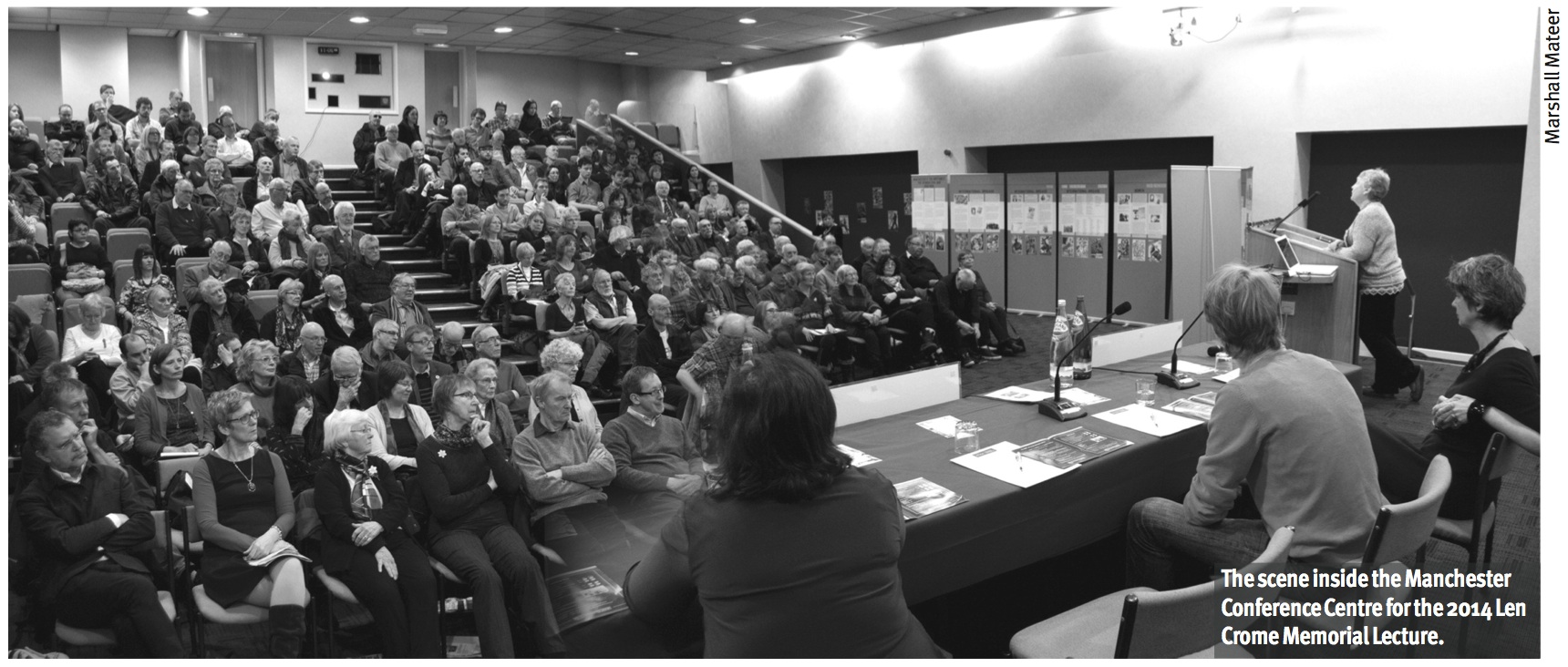When writers and poets took sides
This article appeared in the 37th issue of the newsletter of the International Brigade Memorial Trust and is reprinted here with the IBMT’s permission.
 There was a full house for the IBMT public lecture day in Manchester on 1 March, which focused on the wealth of outstanding literature, film, photography and art generated by the Spanish Civil War. Some 200 people heard the four speakers, Carl-Henrik Bjerstrom, Professor Valentine Cunningham, Dr Carmen Herrero and Jane Rogoyska, all experts in their fields, explore ways in which the war has been portrayed in words and images.
There was a full house for the IBMT public lecture day in Manchester on 1 March, which focused on the wealth of outstanding literature, film, photography and art generated by the Spanish Civil War. Some 200 people heard the four speakers, Carl-Henrik Bjerstrom, Professor Valentine Cunningham, Dr Carmen Herrero and Jane Rogoyska, all experts in their fields, explore ways in which the war has been portrayed in words and images.
Chaired by Professor Mary Vincent of Sheffield University, this year’s event was titled “Taking Sides: Artists and Writers on the Spanish Civil War” – a reference to the famous pamphlet produced by Nancy Cunard, WH Auden and Stephen Spender in 1937, “Authors Take Sides on the Spanish Civil War”.
Valentine Cunningham, of Corpus Christi College, Oxford, described how the war in Spain had “gripped the imagination” of the generation that lived through it. Speaking under the heading “Aestheticising Tragedy”, he explained how writers and poets – the overwhelming majority of them on the side of the Spanish Republic – used their art and influence in support of the cause.
Many writers tried to depict the Spanish Civil
War as a uniquely “new” conflict, said Cunningham, one that encompassed lofty hopes and political ambitions. But they could not escape the tragic reality of death and loss, something that was common to all wars.
In his talk “Radical Nation-Buildiing: Republican Education and the Arts”, Carl-Henrik Bjerstrom, of Royal Holloway, London University, outlined the Republic’s educational and cultural policies and how they were an important element in the mobilisation of support for the war effort. Conscripts, for example, were taught not only to read and write, but also to write poems and songs about their experiences and thoughts.
In her talk “Cinematic Depiction of the International Brigades in Spanish Cinema”, Dr Carmen Herrero, Principal Lecturer on Spanish Culture and Film at Manchester Metropolitan University, showed clips from three films: Carlos Saura’s “¡Ay Carmela!”, Ken Loach’s “Land and Freedom” and Oriol Porta’s documentary “A War in Hollywood” (“Hollywood Contra Franco”). All three were made in the 1990s, but each approached the subject from a different perspective.
They were also part of a wider output of films dealing with the Spanish Civil War – for example Guillermo del Toro’s “Pan’s Labyrinth” of 2006 – that continued to inform and underwrite the movement for the recovery of historical memory in Spain in the face of official silence and denial. Writer and film-maker Jane Rogoyska, authorof “Gerda Taro: Inventing Robert Capa”, took her audience through the tragically short but romantic life of Gerda Taro, sweetheart of fellow photographer Robert Capa. She was killed in July 1937 in the Battle of Brunete, but not before taking memorable images of the Spanish Civil War.
This was the second year running that the IBMT’s Len Crome Memorial Lecture was held in the Manchester Conference Centre. The lecture is held annually in memory of Dr Len Crome, a GP from Blackburn who went to Spain in December 1936 and became the chief medical officer of the International Brigades.
A 10-minute video by Marshall Mateer about the conference can be viewed on the IBMT’s YouTube site.












